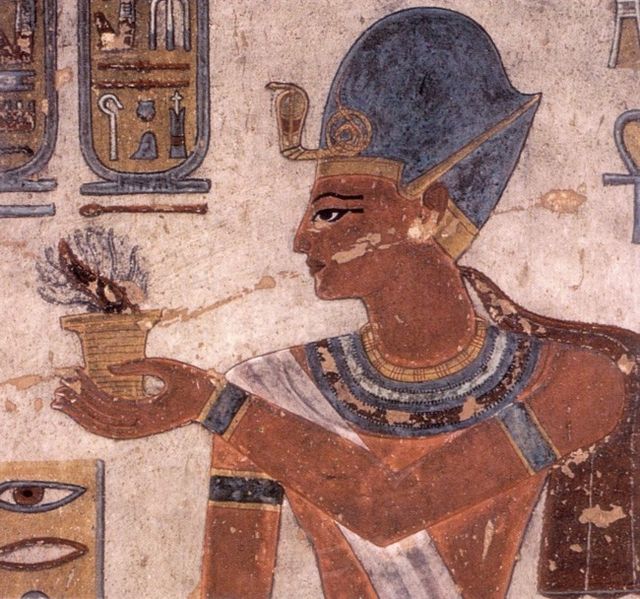Ramesses VI Nebmaatre-Meryamun was the fifth ruler of the Twentieth Dynasty of Egypt. He reigned for about eight years in the mid-to-late 12th century BC and was a son of Ramesses III and queen Iset Ta-Hemdjert. As a prince, he was known as Ramesses Amunherkhepeshef and held the titles of royal scribe and cavalry general. He was succeeded by his son, Ramesses VII Itamun, whom he had fathered with queen Nubkhesbed.
Fragment of Ramesses VI's stone sarcophagus from his tomb now on display at the British Museum. The sarcophagus was originally painted, its stone quarried in the Wadi Hammamat.
Prince Amunherkhepeshef is shown on the "Procession of the Princes" relief in Medinet Habu.
Koptos stela of Ramesses VI's daughter Iset (to the right)
This portrait of Ramesses VI was copied during the Franco-Tuscan Expedition from a painting in the ruler's tomb.
Twentieth Dynasty of Egypt
The Twentieth Dynasty of Egypt is the third and last dynasty of the Ancient Egyptian New Kingdom period, lasting from 1189 BC to 1077 BC. The 19th and 20th Dynasties together constitute an era known as the Ramesside period. This dynasty is generally considered to mark the beginning of the decline of Ancient Egypt at the transition from the Late Bronze to Iron Age. During the period of the Twentieth Dynasty, Ancient Egypt faced the crisis of invasions by Sea Peoples. The dynasty successfully defended Egypt, while sustaining heavy damage.
Portrait of Ramesses IX from his tomb KV6.
Sea Invading from Sea Peoples
Ramesses III was the son of Sethnakht. During his reign, he fought off the invasions of the Sea Peoples in Egypt and tolerated their settlement in Canaan. A conspiracy was hatched to kill him, but it failed. He was later murdered. His mummy, long an inspiration for the scary Hollywood films, showed his throat was slit.
Ramesses IV was the fifth son of Ramesses III. He assumed the throne after his four older brothers had died.








